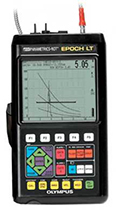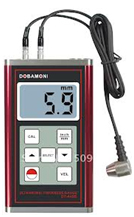 |  |
Ultrasonic inspection utilizes high frequency mechanical vibration s and most commercial ultrasonic testing is done with frequencies between 0.5 and 25 MHz. Ultrasonic launched in to material s to detect internal flaws or to characterize materials.
Ultrasonic testing often perform on steel and other metals and alloys, through it can also be used on concrete, wood and composite.
 |
In the field of industrial ultrasonic testing ultrasonic thickness measurement (UTM) is a method of performing the local thickness of a solid element (typically made of metal, if using ultrasound testing for industrial purposes) basing on the time taken by the ultrasound wave to return to the surface. This type of measurement is typically performed with an ultrasonic thickness gauge. |
UTM is frequently used to monitor metal thickness or weld quality in industrial settings. NDE Technicians equipped with portable UTM probes reach steel plating in sides, tanks, decks and the superstructure. They can read its thickness by simply touching the steel with the measurement head (transducer). Contact is usually assured by first removing visible corrosion scale and then applying petroleum jelly or another couplant before pressing the probe against metal
STAR INT'L NDT SERVICES
Inspection, Testing, Training & Consultancy
- P O Box 30606
- 27th Cross, King Abdullah Street
- Al Khobar 31952
- Kingdom of Saudi Arabia
- +966 503976621
- info@star-ndt.com



